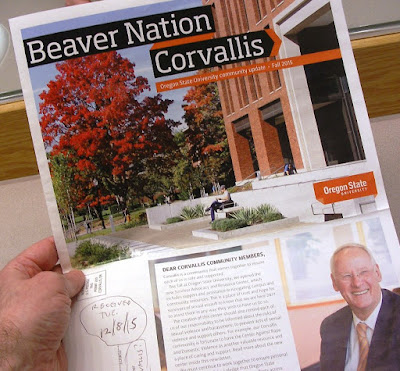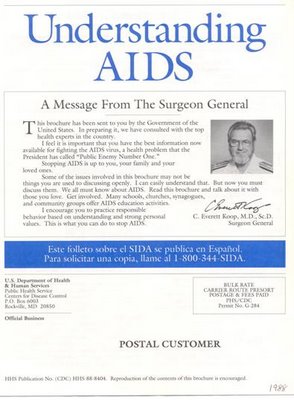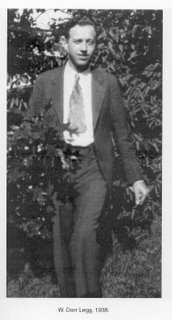PHOTO: Thomas Kraemer selfie taken in 2015 by a low quality videoconference cam shows him wearing a traditional northwest Oregon Patagonia plaid shirt and the new glasses he bought to help improve his worsening low vision blindness related to a stroke that has also caused him some muscle paralysis, but he remains grateful to still be alive. It is uncertain which of his medical problems will worsen enough to prevent him from posting more blog pages, which he has NOT been doing for vanity, fame or profit, but he had been doing because the Google Blogger cloud application allows him to search his own notes from the nearly 2,000 blog posts he has written over ten years of blogging. He is constantly amazed by the ability of the Google search engine to find relevant things, including things he had forgotten about until a Google search of his blog rediscovers it, which is a feat that would be nearly impossible to do even with the old-fashioned and time-consuming method of doing a page by page search of paper notebooks.
When I first started blogging 10 years ago, blogs were the latest invention on the internet and there were several gay authors and opinion leaders, ranging from the conservative Andrew Sullivan to the liberal Michelangelo Signorile, who were both using the same Google Blogger cloud to author and publish their blogs as I still use today. The very prolific blogger Andrew Sullivan moved on to become one of the first paid subscription blog sites, but gave up a few years later, and Michelangelo Signorile's blog was repurposed to post only the free description of his daily paid subscriber Sirius radio show, and he has kept writing a weekly column on gay issues for a liberal website that pays him. (See Michelangelo Signorile Huffington Post Gay Voices). Also still using the Google Blogger cloud is the author and Professor Wayne R. Dynes along with a famous San Francisco AIDS activist and HIV-positive Michael Petrelis who morphed his blog from covering AIDS issues to be more toward supporting his political activity in San Francisco, where his husband provides him support for his blogging.
Other gay authors who are still writing online rarely have standalone blogs anymore, but they will still post content as part of a newspaper site, such as the Dan Savage Love column on thestranger.com Website, and they will maintain both Facebook and Twitter social network feeds, which are usually limited to only linking to interesting content instead of being sources of new content.
Some additional gay bloggers who are still active include the gay law Professor Arthur S. Leonard Blog at artleonardobservations.com who blog posts about key gay law decisions, but his posts frequently are also printed as the regular column he writes for the N.Y. newspaper Gay City News gaycitynews.com Website.
One of the best gay blogs, which from day one insisted it was NOT a blog, is Jim Burroway's Box Turtle Bulletin Website that features a "Daily Agenda" of gay history. It can be easily read once-a-day in small chunks that will repeat, but have new content added to them each year. Jim recently discussed his pending retirement from his day job as a scientist in Tucson, because he will be 55 years old soon and his father died young. (See post by Jim Burroway, "The Daily Agenda for Monday, November 16," boxturtlebulletin.com posted November 16, 2015) He also recently celebrated his blog's anniversary with the post , "10 YEARS AGO: Box Turtle Bulletin Goes Live: 2005," boxturtlebulletin.com posted Nov. 16, 2015. in which he reiterated his original intention for it not to be a blog, but as a counter to the anti-gay forces common ten years ago. However, he notes, ". . . somewhere along the way, BTB became a blog. Not because I wanted it to become one, but because somehow that's just what happened." He also announced his plans "to rejuvenate the site" because, "The site's coding needs a complete overhaul," and he said, ". . .the blog's editorial direction will almost certainly change." My only request to Jim is to make sure the new site coding is done in a manner to be useable by ADA accessible browsers, like the one I use after becoming low vision blind due to a stroke. For example, I usually use his RSS feed because it gives me a simple plain-text stream that is easy to read with enlarged text sizes, however, I realize that RSS feeds are going the way of dodo birds and complicated Website designs are in demand by the fully sighted, however, through good design, I've sites provide mobile versions for small screens that can be easily used by desktop browsers with accessibility features or with assistive devices, such as for Braille readers.
The fully paid subscription model for online content has yet to catch on, as Andrew Sullivan learned the hard way, but advertiser-sponsored content on the internet has become huge, unlike ten years ago when there were few paid advertisements on the Web.
Blogs have become overshadowed by the social networking fashion led by Facebook and others. Despite desperate attempts to add social networking features to Google Blogger, most bloggers refused to spend the time required to sort through the spam of comments and social networking obligations it generated. In my case, I had a malicious attack on my blog that was done by repeatedly claiming I had objectionable content, which caused the Google blog robot manager to automatically disable all search functions for my own blog.
When I lost the ability of searching my own blog, I almost quit Blogger because I don't blog for vanity, fame or profit, but I so still blogs that I can search my own notes. I've written almost 2,000 blog posts during the last ten years and I am constantly amazed by the relevancy of the things a Google search will find on my own blog notes -- including things I had forgotten about until Google rediscovers them and refreshes my memory!
Although Google provides Bloggers the ability to share advertising revenue with them, I've never added advertising to my blog and so I wondered why Google would be willing to host my blog for free. I had a chance several years ago to ask the Google Founders why they hosted blogs for free and they said they love bloggers like me because it improves the quality of their search results, which is their profitable, bread and butter business. Blogs by individual will especially improve searches about more arcane subject matters. The Google founders have ordered their staff to keep blogs forever because one of the founders keeps finding amazing stuff in them he can't find anywhere else. Maybe I should be charging Google for all of the blog work I do! (Full disclosure: I have been profiting generously via my ownership of Google stock a.k.a. Alphabet voting shares even though I don't get any ad revenue from Blogger.)
I don't know how long I can continue blogging with my worsening blindness and paralysis, but I am grateful to be able to again, this year, post a list of my favorite links and posts from last year:
- In my post OSU 'I am gay' writing class essay printed as paid advertisement in student newspaper (11/24/15) I forgot to mention, see previous posts Oregon same-sex marriage vote and Pope resigns hits front page (2/21/13) for photos and links to other previous posts about the famous homophile activist W. Dorr Legg who was a Professor at Oregon State University during World War II.
- Another previous post related to the 'I am gay' essay mentioned above is OSU lesbian, Gay, Bisexual, Transgender, Queer, Questioning, Intersex, and Allied communities, as well as those who identify as Same Gender Loving, Two Spirit, Asexual, Pansexual, and Poly-Amorous (10/9/14), in which I discuss the naming issue that has been around forever. This OSU story was referenced in a post by John Aravosis, "We are now LGBTQ (depending who you ask)," americablog.com posted Oct. 9, 2014. John is another example of a blogger who has moved on to do other things. Likewise, the religious ex-gay activist site Truth Wins Out whose creator moved on to write the paid column by Wayne Besen Huffington Post Website before quitting writing this also.
- Gay men often deny they have a gay voice due to gender stereotypes (7/12/15)
- OSU Pride Center moves to be 'Brave Space' and 'gender inclusive' instead of 'Safe Space' or 'gender neutral' (12/2/15)
- OSU computer printer demand refutes paperless computing predictions by HP (1/17/15) -- printers are still in high demand at Oregon State University according to a, ironically, printed on paper student newspaper caption that says, "Students wait in line for printing at the Oregon State University Valley Library.
- OSU college town development politics over student housing project (4/2/15)
- Baker marriage hits N.Y. Times front page only 4 decades late (5/17/15)
- Book by Michael McConnell on his marriage to Jack Baker that led to the first Supreme Court case on gay marriage (12/29/15) - photo of the first print edition book jacket that includes my book review blurb as founder of the Oregon State University Foundation Magnus Hirschfeld Fund
- New director to be hired for OSU Pride center (5/13/15)
- Corporate research strategy book chronicles my grandfather's work at DuPont (5/11/15)
- James Burton Nichols recalls invention of polyester and nylon at DuPont by Elmer Kraemer and Wallace Carothers (8/15/15)
- OSU Pride Week 2015 student editorial and Dr. Sex comments (5/6/15)
- OSU mom's weekend edition included letter about pegging advice from Dr. Sex (5/2/15)
- OSU Dr. Sex quits her column reported in local newspaper (6/30/15)
- Gay marriage decision by SCOTUS resolves 1972 Baker v Nelson case (6/27/15) -- book to be published in Jan. 2016
- Michael McConnell Files donated to University of Minnesota Tretter Collection for GLBT Studies (11/2/15)
- Artist of OSU Benny Beaver engineer mascot decal used it for other schools (6/6/15)
- Apple Apps written in Objective-C can now use 'Swift' language (6/17/15)
- OSU soap opera ends with new head of Electrical Engineering and Computer Science (8/5/15) - V. John Mathews named new head of EECS
- New head of OSU EECS sends letter to alumni promoting interdisciplinary research perfect for Magnus Hirschfeld Fund (10/31/15)
- Fold-up cardboard dymaxion globe Honeywell Fuller Projection 1967 (8/8/15)
- Nazi persecution of homosexuals traveling exhibit from United States Holocaust Memorial Museum (9/26/15)
- Same-sex marriage in 1877 of a woman to a female-to-male (9/30/15)
- Dear Abby advice on FTM pronoun etiquette printed opposite comic page read by children (10/24/15)
See my previous nine annual reviews of my blog posts:
- Oregon State University 2006 in review (12/27/06)
- One year of blogging (4/18/07)
- Year 2007 in review (12/29/07)
- Two years of blogging (4/12/08)
- Year 2008 in review (12/28/08)
- Three years of blogging (4/14/09)
- Year 2009 in review (12/30/09)
- Four years of blogging (4/10/10)
- Year 2010 in review - 5 years of blogging (12/27/10)
- Year 2006-2011 in review - 6 years of blogging (12/1/11)
- Year 2012 in review - 7 years of blogging (12/23/12)
- Year 2013 in review - 8 years of blogging (12/11/13)
- Year 2014 in review - nine years of blogging (12/27/14)
- Year 2015 in review - ten years of blogging (12/30/15)















